Micronesia Flag Meaning
Four white five-pointed stars arranged in a diamond pattern on a light blue field, representing the four states of the Federated States of Micronesia surrounded by the Pacific Ocean.
- Continent
- Oceania
- Adopted
- 1978
- Ratio
- 10:19
- Colors
- blue, white
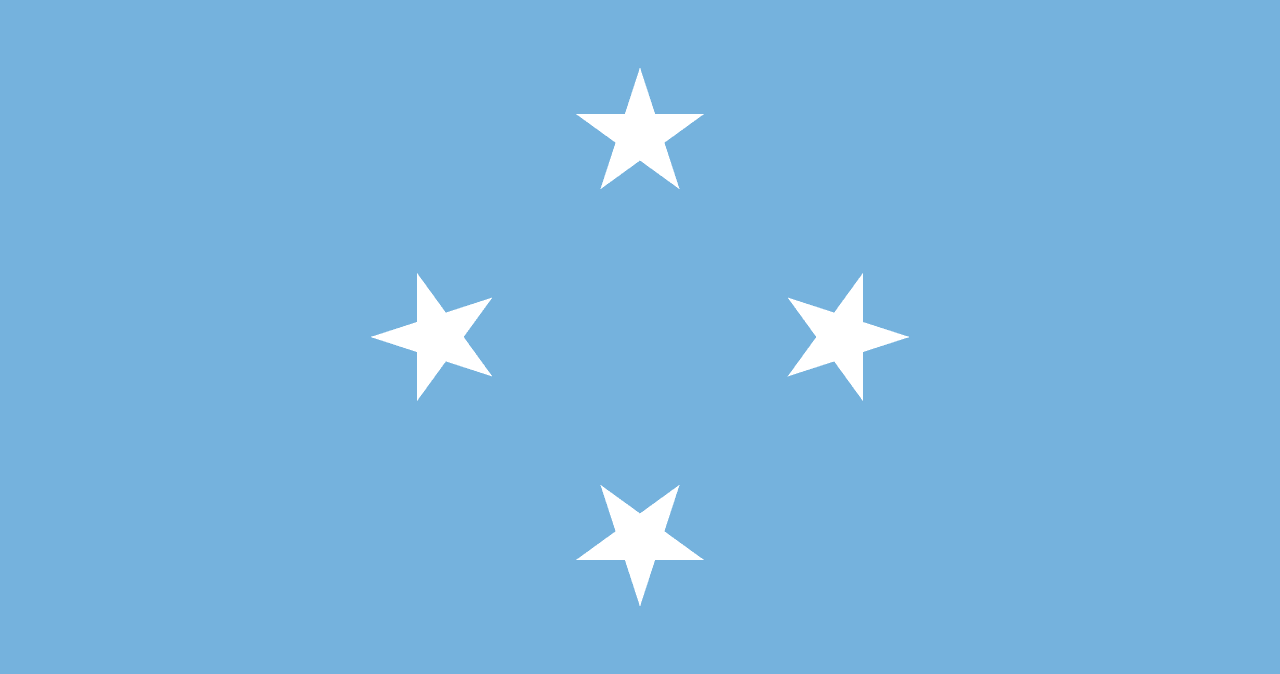
Symbolism
Light Blue Field: Represents the vast Pacific Ocean that surrounds and connects the four island states, symbolizing the maritime heritage and oceanic identity that unites all Micronesians.
Four White Stars: Each star represents one of the four constituent states of the federation: Yap, Chuuk (formerly Truk), Pohnpei, and Kosrae, symbolizing their unity under one federal government.
Diamond Arrangement: The diamond pattern of the stars represents the geographic arrangement of the island states across the Pacific, with each star positioned to roughly correspond to their relative locations.
Five-Pointed Stars: The traditional five-pointed star design represents guidance, hope, and the bright future of the federated states working together as one unified nation.
White Color: Symbolizes peace, purity, and the peaceful intentions of Micronesia in the Pacific region, reflecting the nation's commitment to harmony and cooperation.
History
- Pre-1947: The Caroline Islands (modern Micronesia) were successively controlled by Spain, Germany, and Japan, with local traditional symbols and no unified flag representing the scattered island communities.
- 1947-1978: The area became the Trust Territory of the Pacific Islands under United Nations mandate administered by the United States, using the UN flag and later Trust Territory symbols.
- 1965-1975: Discussions began about self-governance and eventual independence, leading to negotiations about creating a federated structure among the diverse island groups.
- 1975: The four districts (Yap, Truk, Ponape, and Kosrae) agreed to form a federation, beginning the process of developing national symbols including a flag design.
- November 30, 1978: The current flag was officially adopted when the Federated States of Micronesia gained self-governance, with the design chosen to represent federal unity.
- November 3, 1986: Micronesia gained full independence under the Compact of Free Association with the United States, and the flag became the symbol of a sovereign nation.
- 1978-Present: The flag has remained unchanged since adoption, representing the stability and continuity of the federal system despite challenges of governing scattered island communities.
Trivia
- Micronesia's flag is one of the few national flags to use a diamond pattern arrangement of stars, making it instantly recognizable among Pacific Island flags.
- The flag represents one of the world's most geographically dispersed nations, with the four states spread across over 1 million square miles of Pacific Ocean.
- Each of the four states maintains its own flag and symbols while being united under the federal flag, reflecting the balance between local and national identity.
- The flag's light blue color specifically represents the Pacific Ocean, making it one of many Pacific Island flags to use blue as the primary color.
- Micronesia is one of the smallest nations by population (about 100,000 people) but one of the largest by ocean territory, which the flag's blue field represents.
- The flag was designed during the transition from Trust Territory status to independence, making it a symbol of successful decolonization in the Pacific.
- The four stars arrangement roughly corresponds to the actual geographic positions of the states, with careful attention paid to their relative locations in the Pacific.
- Micronesia uses the US dollar as its currency despite independence, and the flag appears alongside American symbols due to the close relationship under the Compact.
- The flag appears on Micronesian passports, which allow visa-free travel to the United States due to the special relationship between the two nations.
- Traditional navigation in Micronesia relied on stars for ocean voyaging, making the star symbolism particularly meaningful for the maritime culture.
- The flag represents a unique federal system where each state maintains significant autonomy while sharing defense and foreign policy with the federal government.
- Climate change discussions often feature the Micronesian flag, as rising sea levels pose an existential threat to these low-lying island communities.
- The flag appears at Pacific Island forums and regional organizations where Micronesia plays an active role in Pacific Island cooperation and development.
- Micronesian athletes compete under this flag in international competitions, particularly in weightlifting where the country has achieved notable success despite its small size.
- The flag's simple design makes it easily recognizable at United Nations meetings, where Micronesia advocates for small island developing states' concerns.
Related Countries
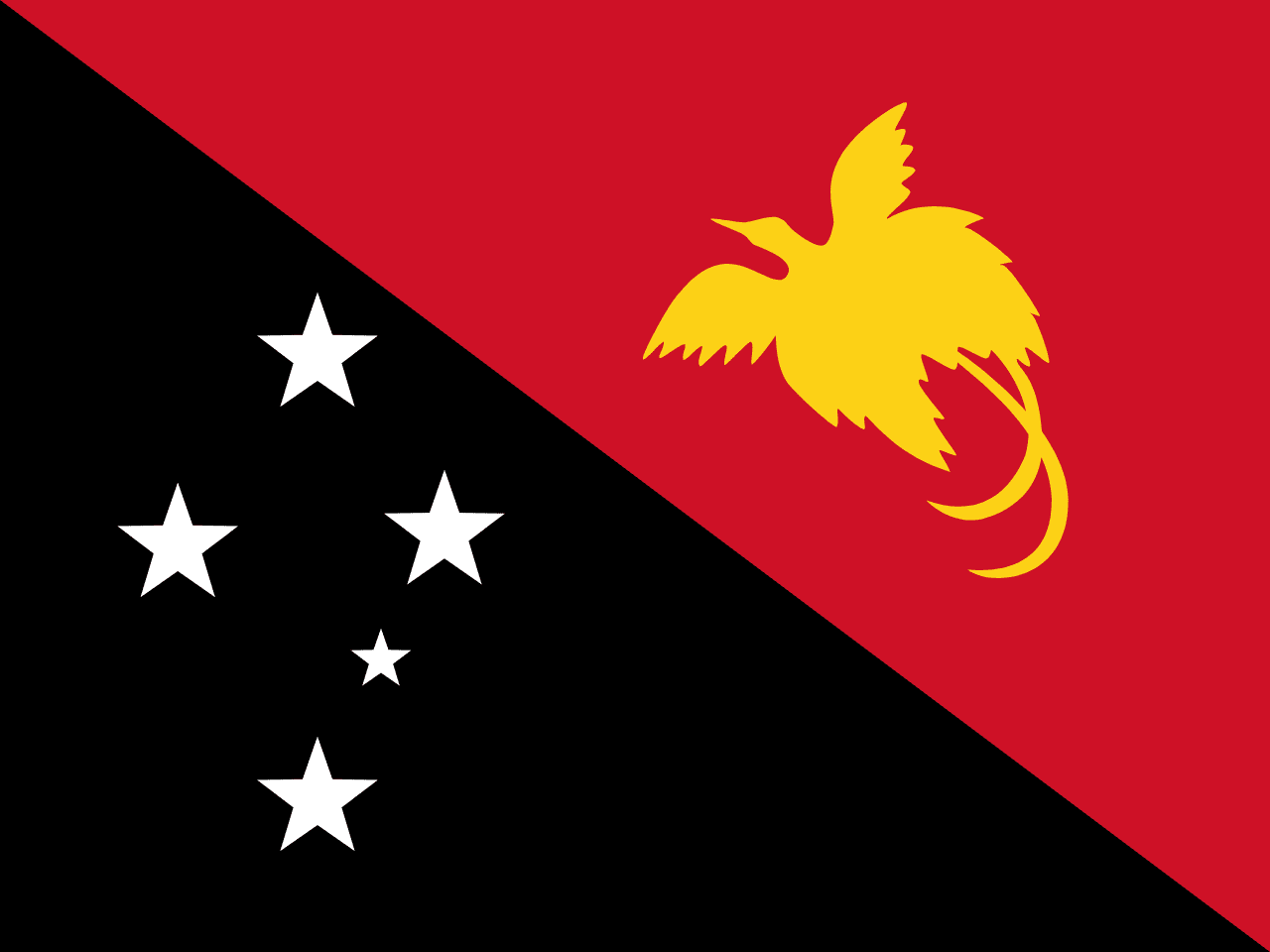
Papua New Guinea
Oceania
Divided diagonally from upper hoist to lower fly: the upper triangle is red with a yellow Raggiana bird-of-paradise, and the lower triangle is black with five white stars of the Southern Cross.
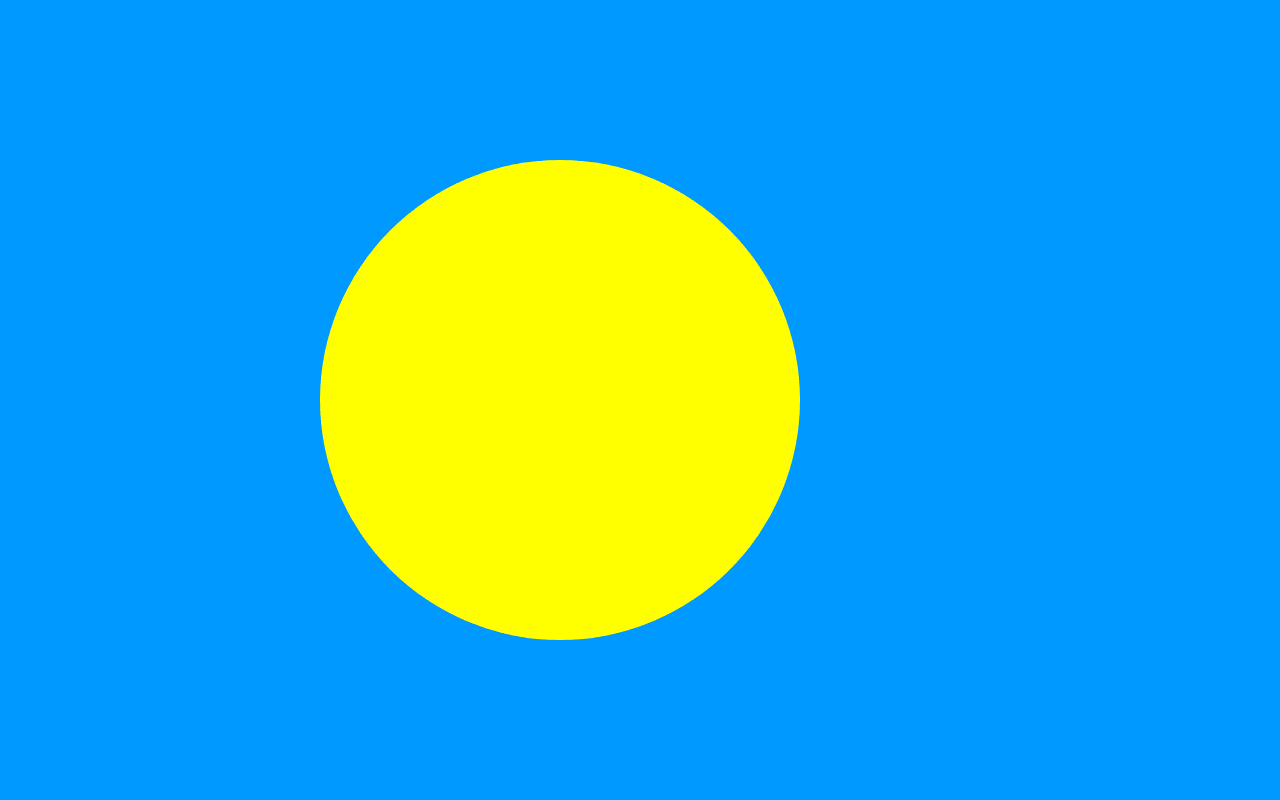
Palau
Oceania
A light blue field with a golden-yellow full moon slightly off-center toward the hoist. The flag symbolizes independence, culture, and natural harmony.
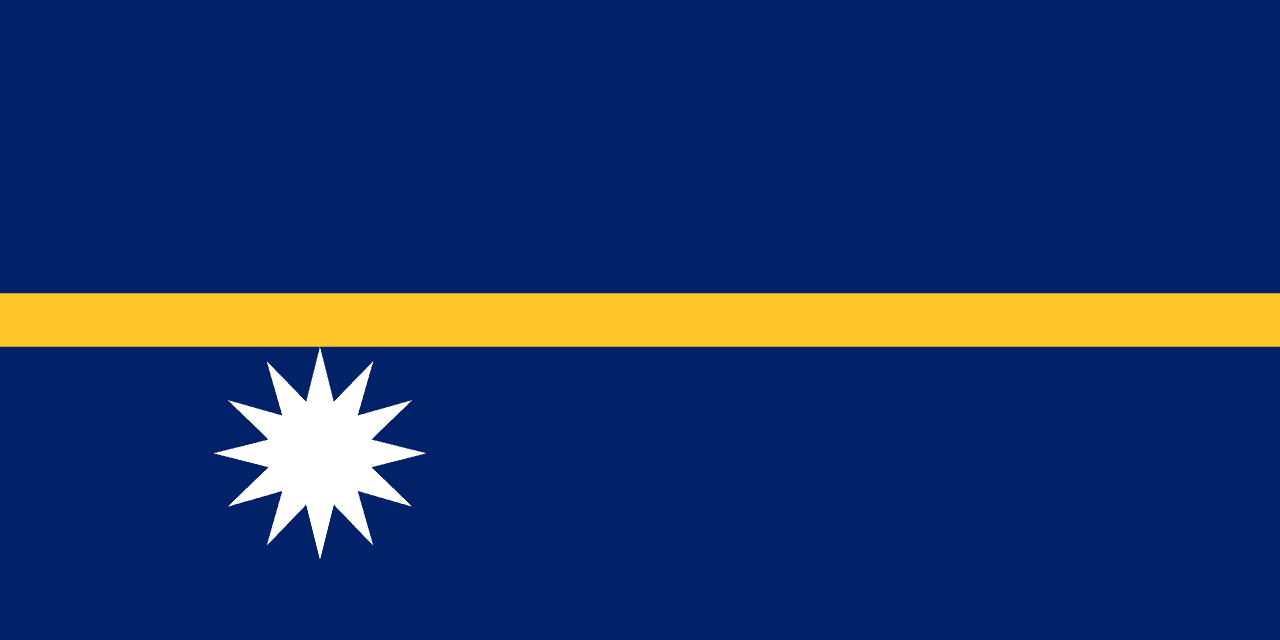
Nauru
Oceania
A blue field with a horizontal yellow stripe across the center and a white twelve-pointed star below the stripe near the hoist. The design reflects Nauru’s position just south of the equator and its cultural identity.
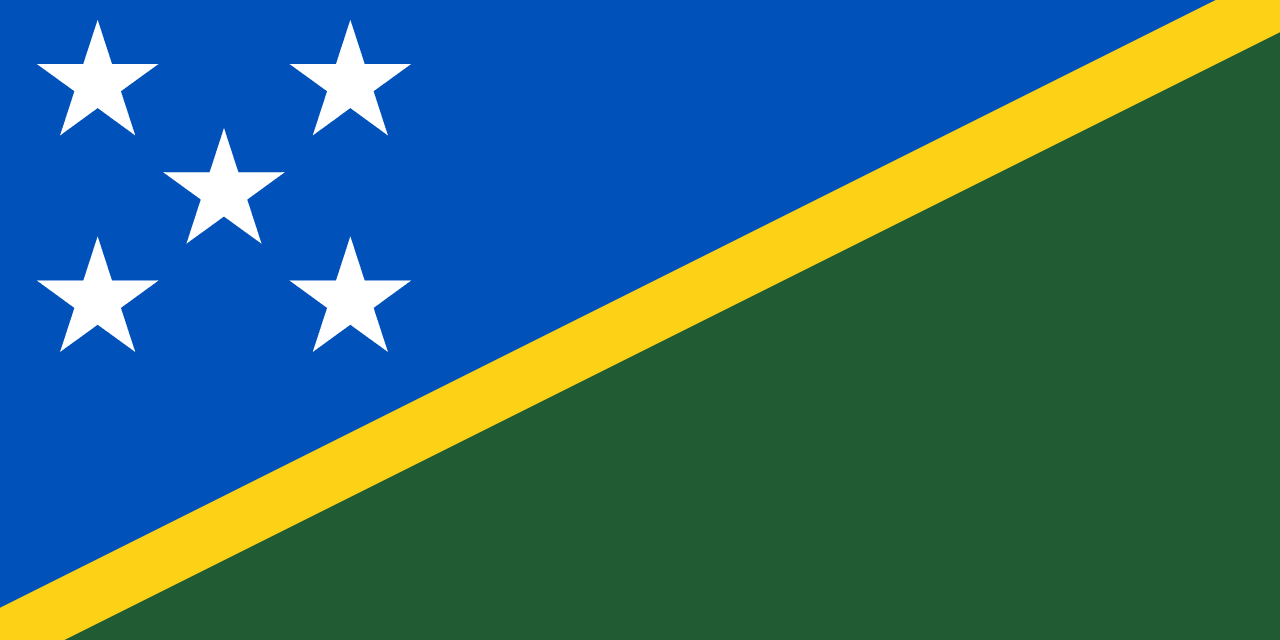
Solomon Islands
Oceania
A blue triangle in the upper hoist and green triangle in the lower fly, separated by a thin yellow diagonal stripe, with five white five-pointed stars arranged in an X pattern in the blue triangle, representing the ocean, land, sunshine, and the five main island groups of this Melanesian nation.
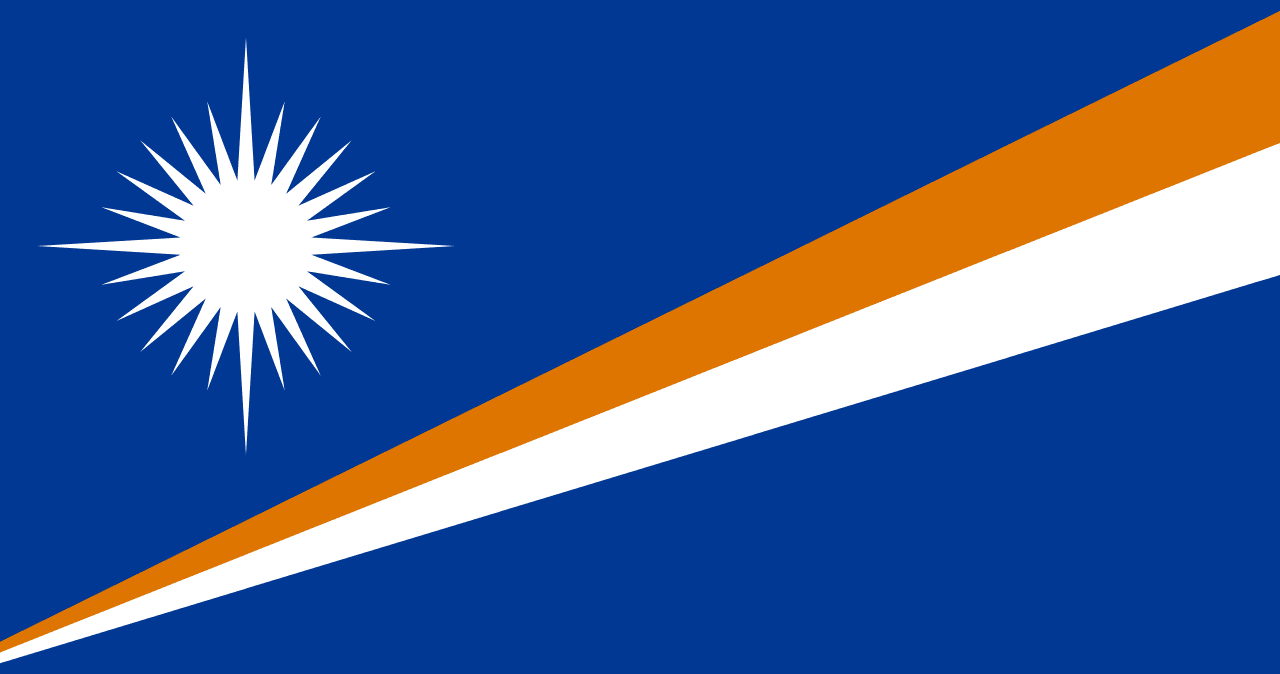
Marshall Islands
Oceania
A blue field with diagonal orange and white stripes extending from the lower left, and a white 24-pointed star in the upper left corner, representing the Pacific Ocean, the island chains, and the Christian faith of this coral atoll nation.
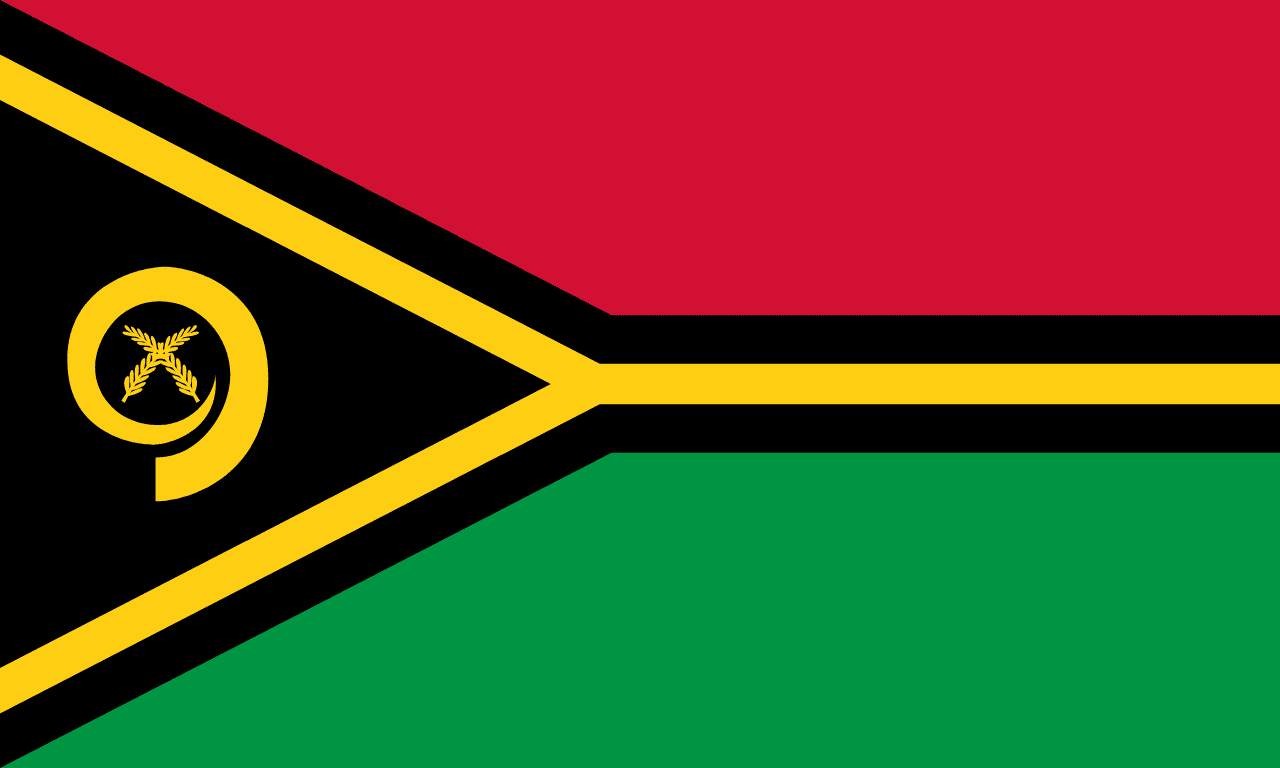
Vanuatu
Oceania
Red and green horizontal bands separated by a black stripe edged in yellow, with a yellow Y-shape extending from the hoist containing a boar's tusk and two crossed fern leaves, representing the blood of sacrifice, the rich soil, the Melanesian people, enlightenment, and traditional Melanesian values and culture.